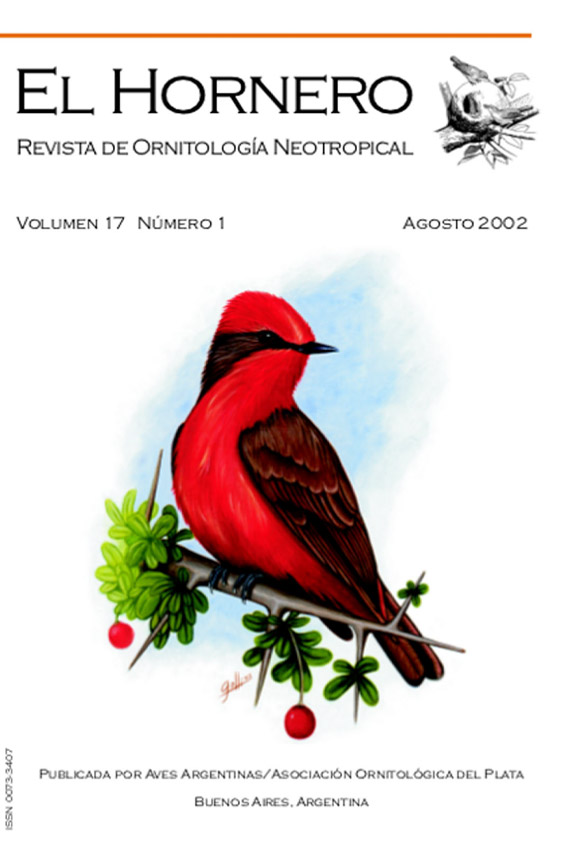Abstract
We counted raptors in two transects (A and B) in an agroecosystem located in south-eastern Buenos Aires Province, in order to quantify habitat use. We recorded six species of diurnal raptors: Elanus leucurus, Circus cinereus, Circus buffoni, Milvago chimango, Falco femoralis and Falco sparverius. In the transect A we observed all six species. Most of them used harvested wheat fields in a greater or similar proportion respect to their availability during summer and autumn. Elanus leucurus used pastures in a greater or similar proportion respect to their availability during summer, autumn and winter, whereas Milvago chimango used them during summer and autumn. In transect B we recorded only Elanus leucurus, Milvago chimango and Falco sparverius while hunting. Elanus leucurus hunted in harvested soybean fields in a greater or similar proportion respect to their availability during autumn, and hunted heavily in pastures. Falco sparverius used mountain grassland habitats. In both transects, only Milvago chimango hunted in plowed fields, and most species avoided or showed little use of crop fields. In transect A, raptors hunted more frequently during autumn; in transect B they hunted more frequently during summer. Milvago chimango hunted more frequently during winter in both transects. The selection of hunting habitat that we observed in this study might be more influenced by prey accessibility than by prey abundance.
References
BABCOCK K (1995) Home range and habitat use ofbreeding Swainson¥s Hawk in the Sacramento Val-ley of California. Journal of Raptor Research 29:193ñ197
BAKER J Y BROOKS R (1981) Distribution patterns ofraptors in relation to density of meadow voles. Con-dor 83:42ñ47
BECHARD MJ (1982) Effect of vegetative cover on for-aging site selection by Swainson¥s Hawk. Condor84:153ñ159
BERRY M, BOCK C Y HAIRE S (1998) Abundance of di-urnal raptors on open space grasslands in an ur-banized landscape. Condor 100:601ñ608
BOSAKOWSKI T Y SMITH D (1997) Distribution and spe-cies richness of a forest raptor community in rela-tion to urbanization. Journal of Raptor Research 31:26ñ33

This work is licensed under a Creative Commons Attribution-NonCommercial 4.0 International License.





